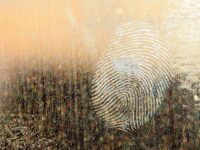No one can deny the rise of intrigue for crime television over the past decade. Maybe you binge-watched “Criminal Minds” during quarantine, saw episodes of “NCIS” over the years, or perhaps just caught a glimpse of any popular crime show. Regardless, many have a preconception of the forensics involved in these fictional investigations. The process usually involves a quirky lab technician who runs tests and returns results to investigators quickly. Crime media creates the impression that forensic science is a fast task that leads directly to the perpetrator.
The real procedures are not as simple and definitely not as fast. Forensic science itself consists of many techniques — the analyses of fingerprints, DNA, hair, bullets, drugs, and more. Technicians collect evidence from crime scenes, examine it, and convey the information to law enforcement. The profession is often split into different roles and departments: toxicology labs examine drugs or poisons, those in cyber forensics extract data from computers, forensic entomologists study the insects found at a crime scene, and so on. One technician rarely does it all, as portrayed in the media. Besides, not all cases require thorough forensic analysis, and the high cost of some procedures, such as DNA analysis, prevents frequent use in many cases.
The science that reconstructs past crimes is more complex and inaccurate than it seems in media portrayal.
The sensational representation of forensics has become an issue in courtrooms as well. Many claim that jurors now unreasonably expect to see scientific evidence backing up cases, such as fingerprinting and DNA analysis. This change has been labeled “the CSI effect” by those who believe popular television shows, particularly “CSI: Crime Scene Investigation,” are the cause. Higher expectations from the public can make it harder to prosecute defendants and prompt investigators to waste resources on tests that appear more supported by science. Even when cases are backed by forensic inspection, the results are not as factual as the public might think. Matches from AFIS, a commonly used Automated Fingerprint Identification System, cannot be used to draw perfect conclusions. According to global technology company Thales Group, these potential matches have typically low success rates of 30 percent for latent print analysis, and results can depend on the skills of technicians. Additionally, cases of misinterpreted DNA analysis have occurred all over the country, and different technicians can produce varying results. DNA analysis, an intended straightforward scientific result, has not lessened subjectivity in cases. Forensic logic can seem concrete, but citizens can be misled, and suspects face false convictions.
Forensics does not contain all the answers, but it certainly increases overall efficiency in solving crimes and remains imperative to the investigative process.
Fortunately, efforts are being made within forensic science to improve expectations and accuracy. Areas of investigation that were founded in law enforcement are starting to shift towards scientific analysis. National councils are calling for improvements, aiming for better accreditations and standards, and new methods of evidence interpretation are being introduced. Establishments like the National Institute of Justice (NIJ) fund research to strengthen forensic science. NIJ invests in new technologies, provides grants for research, and pursues improved precision in all areas of forensics. These improvements can be further developed through lab transparency, independent labs, and solid standards for evidence. In the field, some call for lab accreditation, examiner certification, and repetition (using several labs instead of one). Overall, there are numerous ways to advance this field; organizations are striving for change that can have a significant impact on the reliability of scientific evidence.
Reforms in the structure of forensic investigation would provide a more accurate truth to citizens. The science that reconstructs past crimes is more complex and inaccurate than it seems in media portrayal. Next time you watch a crime show, keep in mind that the elaborate field is not captured completely. Forensics does not contain all the answers, but it certainly increases overall efficiency in solving crimes and remains imperative to the investigative process. In consideration of past forensic mistakes and misconceptions, the field should focus on the correction of errors and endeavors for advancement.






